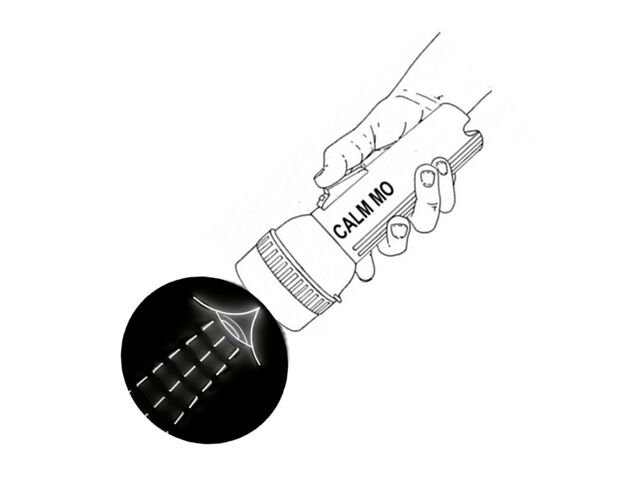Neuroticism
A CALM Guide to Reversing Neurotic Loops
How to see these loops and change reactions to being more adaptive.
Posted November 3, 2022 Reviewed by Michelle Quirk
Key points
- Neurotic loops involve negative reactions to negative feelings triggered by negative situations.
- Although the negative reactions make sense logically, they often result in making things worse, like water on a grease fire.
- We are seeing significant increases in the prevalence of internalizing conditions, especially among our youth.
This post, co-authored with Marcia Gralha, MA, is the first in a series of seven posts that will describe the core of what mental health professionals call “internalizing disorders” and highlight what can be done about them.
Are you feeling emotionally stuck or defensive? Are you struggling with a critical inner voice? Do you feel negative about your negative feelings?
Internalizing conditions are characterized by heightened feelings of negative emotions, like depressed mood, generalized feelings of anxiety and vulnerability, and defensive irritability. These conditions are also typically associated with self-critical thoughts, low self-esteem, rumination, relationship difficulties, and low levels of life satisfaction.
Increases in Internalizing Conditions
Unfortunately, we are seeing significant increases in the prevalence of internalizing conditions, especially among our youth. To give just one example, a recent study conducted at Boston University (Lipson et al., 2022) found a marked surge in anxiety, depression, and other mental health problems among the college student population.
There are many different factors that contribute to whether someone will struggle with an internalizing condition, including genetic factors, developmental and learning factors, relationship factors, and things like trauma or loss, as well as the stability and security of the environment and the availability of resources to achieve one’s goals. If you are wondering if you might be struggling with an internalizing condition, you can take a self-assessment, such as that found here.
These struggles are the most common reason why people seek psychotherapy, and psychotherapy can be very helpful in addressing them. However, given the enormous numbers of people that are having difficulty with these issues, we need to develop educational tools that can be widely shared and reliably applied to address the internalizing conditions outside the therapy room. Our goal in this blog series is to lay out what we see as the central elements that drive the internalizing conditions and what one can do about it.
Neurotic Loops
This blog series will teach you first about the core processes that sit at the center of the internalizing conditions. These are called “neurotic loops.” At the core of neurotic loops is a maladaptive coping strategy that is akin to bringing water to a grease fire. Although it logically makes sense to try to put out a fire with water, if you do that with a grease fire, then you will make the situation worse, as was conclusively demonstrated in this video by Mythbusters.
To see how a neurotic loop might happen, consider how a socially anxious college student may momentarily benefit from isolating from others to avoid a social encounter that feels threatening. This makes sense based on their feelings. However, the decision to retreat to the safety of the dorm room could easily end up contributing to social alienation and loneliness in the long term. As suggested by this example, the nature of neurotic loops is like bringing water to a grease fire; the response makes sense based on one’s history, but it ends up being maladaptive in the current situation and over time.
If neurotic loops reside at the center of the internalizing conditions, what can folks do to reverse them? After explaining the nature of neurotic loops, this blog series will then spell out a new approach to psychological mindfulness called “CALM-MO.” As a recent dissertation clarifies in detail (Miller, 2022; see here), CALM-MO is a tool that connects the core wisdom of psychotherapy taken from across the major approaches. It then ties these concepts together into a package that gives both practitioners and patients access to the key principles and processes that can undo neurotic loops and help people deal with negative situations and negative feelings in a more adaptive and growth-oriented way.
I (Henriques) say this as current president of the Society for the Exploration of Psychotherapy Integration. I have surveyed many different approaches, and my theme for my presidency has been “Toward a Common Core." (See here for my 2022 Presidential Address to the Society). I see neurotic loops and the CALM-MO approach as representing the central core of the internalizing conditions and what to do about them.
The posts in this series will walk readers through the what and the why of neurotic loops, which will help you identify when you are bringing water to a grease fire. They will then lay out how to shift from that negative, defensive reactivity to a mindful responsivity that enables greater levels of curiosity, acceptance, loving compassion, and a motivated orientation toward one’s valued states of being. As one learns to activate their MO and apply a CALM attitude to negative situations that trigger negative feelings, the result is that one reverses the loop and stops spreading the maladaptive "water on grease fires" that are at the root of the internalizing conditions.

Part II: The Neurotic Loops at the Heart of Many Mental Disorders
Part III: How to Activate Sage Mode and Start Reversing Neurotic Loops




